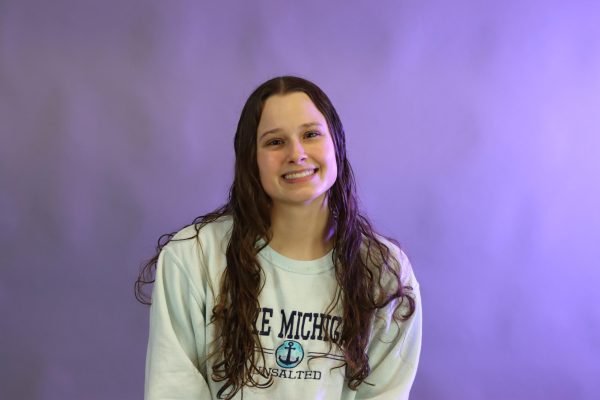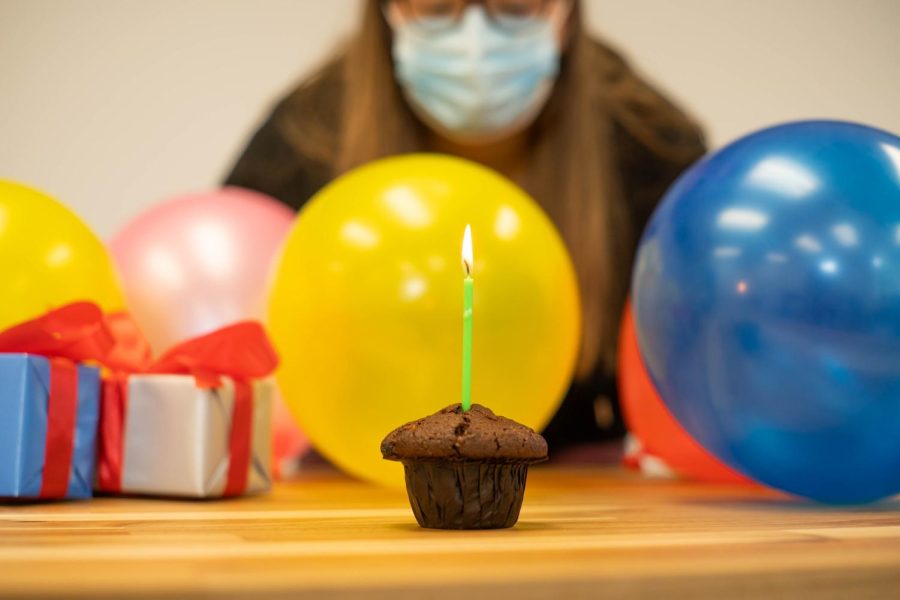The Holidays and Covid-19… Again?
How Omicron Affected Our Holidays
Covid-19 and the holidays have never gotten along. Especially not this year. A variant with high infection rate emerged, Omicron. “Unfortunately the Omicron variant is so contagious that it is next to impossible to even come close to stopping the spread of it, because it can pass so easily from one person to another,” said Dr. Steven Lawrence, MD, MSc.
There was very little we could do about it, besides wearing masks, getting vaccinated, and limiting our contact with others.
“The only way to markedly slow (Covid-19) down would be for extreme measures, even more so than what was done in march of 2020 when we had widespread lockdowns,” said Lawrence.
Despite these measures, many people still carried on with their normal holiday traditions. Many people traveled and saw their families, many for the first time in a few years.
“For break I saw some of my friends, worked at my job and went out of town to Kansas City for a couple of days,” Margaret Thompson, a sophomore said. “At my work we were instructed to be more strict about customers wearing masks but I only really started finding out about it (Omicron) during the end of break.”
Many business places now have to follow mask rules more closely because the variant is spreading much faster.
“I saw one of my friends right before school and she was talking about how she wanted to go back online for just a little bit in order not to catch the virus,” Thompson said.
Many schools in St. Louis are going virtual because of how fast the new variant is spreading. Clayton is not going virtual. And that is partly due to the laws passed in Missouri which prohibits that.
“Clayton will not go virtual unless so many teachers are absent that we can’t find enough coverage for classes,” Kelly Fisher-Bishop, a teacher at Clayton, said. There is a huge shortage of subs right now; it would make teaching in person very difficult.
After the holidays, many people started to see the aftermath of so much interaction, largely without masks. According to the New York Times, the average number of Covid cases from December 26 to January 5th in the US was 469,518 new cases a day. In the most recent week, case counts have been north of 700,000 a day.
Another problem soon arose. With a large number of people getting infected, people needed more tests. Due to a large number of people needing tests, there became a widespread testing shortage.
Abby Rosenfeld, a sophomore at Clayton, went to Colorado over winter break to go skiing.
“Basically we’re skiing and we had everything normal on the way there. We wore masks and were extra safe. But then a few days later my dad woke up in the middle of the night with a cold and so we had these at home test kits,” Rosenfeld said.
Rosenfeld said she probably would not be able to test if they didn’t have the at-home test kits with them.
Another aspect to this situation that Abby brings up is that even if it may seem like “just a cold” it could possibly (and most likely) be Covid. This makes it harder to test that out if there are not enough tests for people to quickly test it out.
There are many reasons why tests became hard to come by. The beginning of the story can be traced back to this summer.
“Over the summer, a lot of testing companies sort of stopped producing the tests because they thought Covid was pretty much over, so the testing capacity went down,” Lawrence said.
Since the capacity to manufacture tests was diminished, it would take the manufacturers longer to mass produce tests. Combined with the sudden onset of the Omicron variant, there was very little time to ramp up a process that requires quite a bit of time.
“There are multiple steps along the entire supply chain. It takes a bit of time and Omicron came on so fast that there wasn’t enough time to mobilize all of those tests,” Lawrence said.
While Covid may be sticking around, the experiences from the holidays this year will certainly help us to be more prepared for next year.
A $50 or more donation includes a subscription to the Clayton High School Globe 2024-2025 print news magazine.
We will mail a copy of our issues to the recipients of your choice.
Your donation helps preserve the tangible experience of print journalism, ensuring that student voices reach our community and that student democracy thrives.

Caitlin Kuhlmann is a senior at Clayton High School. She joined The Globe sophomore year, and has enjoyed learning more about herself and her community. Outside of school, she...



